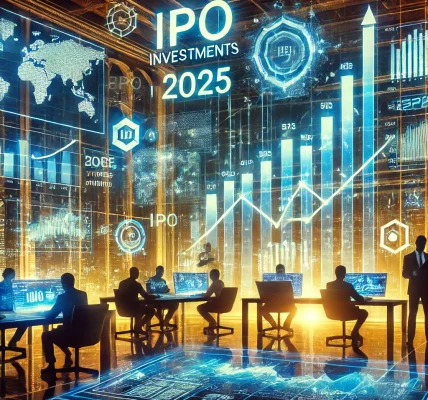Introduction
The technology sector has long been a driving force of global financial markets, with tech stocks delivering remarkable growth over the past decade. However, as we enter 2025, investors are questioning whether the tech industry will continue its meteoric rise or face a significant downturn. This article delves into the key factors shaping the tech stock landscape, potential risks, and investment opportunities in 2025.
The Tech Sector’s Recent Performance
In the past few years, tech stocks have experienced both spectacular highs and turbulent corrections. Companies such as Apple, Microsoft, Google (Alphabet), Amazon, and Nvidia have continued to dominate, but new players in artificial intelligence (AI), cloud computing, and cybersecurity are also making their mark.
Key Highlights from 2023-2024:
- AI Boom: AI-driven companies like OpenAI, NVIDIA, and C3.ai saw explosive growth.
- Semiconductor Shortages Eased: The global chip supply chain stabilized, benefiting manufacturers.
- Regulatory Challenges: Governments worldwide imposed stricter antitrust regulations on tech giants.
- Rising Interest Rates: Higher borrowing costs impacted tech startups reliant on venture capital.
Factors Influencing Tech Stocks in 2025
1. Artificial Intelligence & Automation
AI continues to be a game-changer, driving advancements in automation, personalized services, and data processing. Companies specializing in AI applications, such as OpenAI, Google DeepMind, and Tesla’s AI initiatives, could witness sustained growth.
Investment Opportunities:
- AI-powered software and robotics
- AI-driven cybersecurity solutions
- Machine learning for finance and healthcare
2. Quantum Computing & Next-Gen Processors
Quantum computing has made strides in solving complex problems, attracting major investments from IBM, Google, and emerging startups. If breakthroughs occur, they could revolutionize industries like pharmaceuticals, cryptography, and financial modeling.
Investment Risks:
- Uncertain commercialization timeline
- High research and development (R&D) costs
3. Cloud Computing & Data Centers
The shift toward cloud-based infrastructure continues, benefiting companies like Amazon Web Services (AWS), Microsoft Azure, and Google Cloud. The increasing adoption of edge computing and hybrid cloud solutions could drive further gains.
Growth Areas:
- AI-driven cloud optimization
- Green data centers & energy-efficient computing
- Decentralized cloud storage solutions
4. Cybersecurity & Data Privacy
As cyber threats grow, so does the demand for robust security solutions. Companies like CrowdStrike, Palo Alto Networks, and Fortinet are well-positioned to capitalize on the increasing importance of zero-trust security models and AI-driven threat detection.
Investment Concerns:
- Rising regulatory scrutiny on data privacy laws (GDPR, CCPA)
- Rapidly evolving cyber threats requiring continuous adaptation
5. Metaverse & Virtual Reality (VR/AR)
While the metaverse received mixed reactions in 2024, major players like Meta (Facebook), Apple, and Microsoft continue investing in augmented and virtual reality. Apple Vision Pro and Meta’s continued expansion in VR may reignite interest in immersive technologies.
Potential Risks:
- Slow adoption rates
- Consumer skepticism due to high costs
- Need for improved infrastructure (5G, faster GPUs)
6. Electric Vehicles (EV) & Smart Tech Integration
EV companies, led by Tesla, Rivian, and BYD, are integrating AI and software-driven features into their vehicles. The automotive industry’s digital transformation is expected to create new opportunities for tech firms supplying autonomous driving software, battery technology, and EV-based AI models.
Market Challenges:
- Intense competition from legacy automakers
- Global supply chain disruptions
- Government policies and EV tax incentives
Potential Risks for Tech Stocks in 2025
1. Macroeconomic Uncertainty
Factors like inflation, interest rate hikes, and geopolitical tensions can significantly impact stock valuations. If interest rates remain high, unprofitable tech startups may struggle to raise capital.
2. Regulatory Crackdowns
Governments worldwide are tightening regulations on tech giants to ensure fair competition and data privacy. New laws targeting AI ethics, monopolistic practices, and digital taxation may affect profit margins.
3. Tech Bubble Concerns
The rapid rise of AI and cloud-based companies has led some analysts to question whether a tech bubble is forming. If investor sentiment shifts, a sharp correction could follow.
Investment Strategies for 2025
For investors navigating the uncertainties of tech stocks, a balanced approach is essential. Here are some strategies to consider:
1. Diversification
Avoid putting all investments in a single tech sub-sector. A diversified portfolio with AI, cybersecurity, semiconductor, and cloud computing stocks can reduce risk.
2. Focus on Fundamental Strength
Invest in companies with strong balance sheets, high revenue growth, and sustainable business models. Companies with low debt and high cash reserves are better positioned for market downturns.
3. Monitor Regulatory Changes
Stay informed about antitrust rulings, AI regulations, and cybersecurity laws, as these can heavily impact stock prices.
4. Long-Term vs. Short-Term Plays
- Long-term investors should focus on emerging technologies with disruptive potential.
- Short-term traders can benefit from volatility in earnings reports and sector rotation trends.
Conclusion: Boom or Bust?
Tech stocks in 2025 present both exciting opportunities and notable risks. While AI, cloud computing, and cybersecurity sectors are expected to thrive, macroeconomic uncertainties and regulatory hurdles could create volatility.
For investors, the key to success lies in conducting thorough research, diversifying investments, and staying informed about market trends. Whether tech stocks boom or bust, those with a strategic approach will be best positioned to navigate the evolving landscape.
By staying informed and adapting investment strategies, investors can take advantage of opportunities while mitigating risks in the ever-evolving tech sector.




